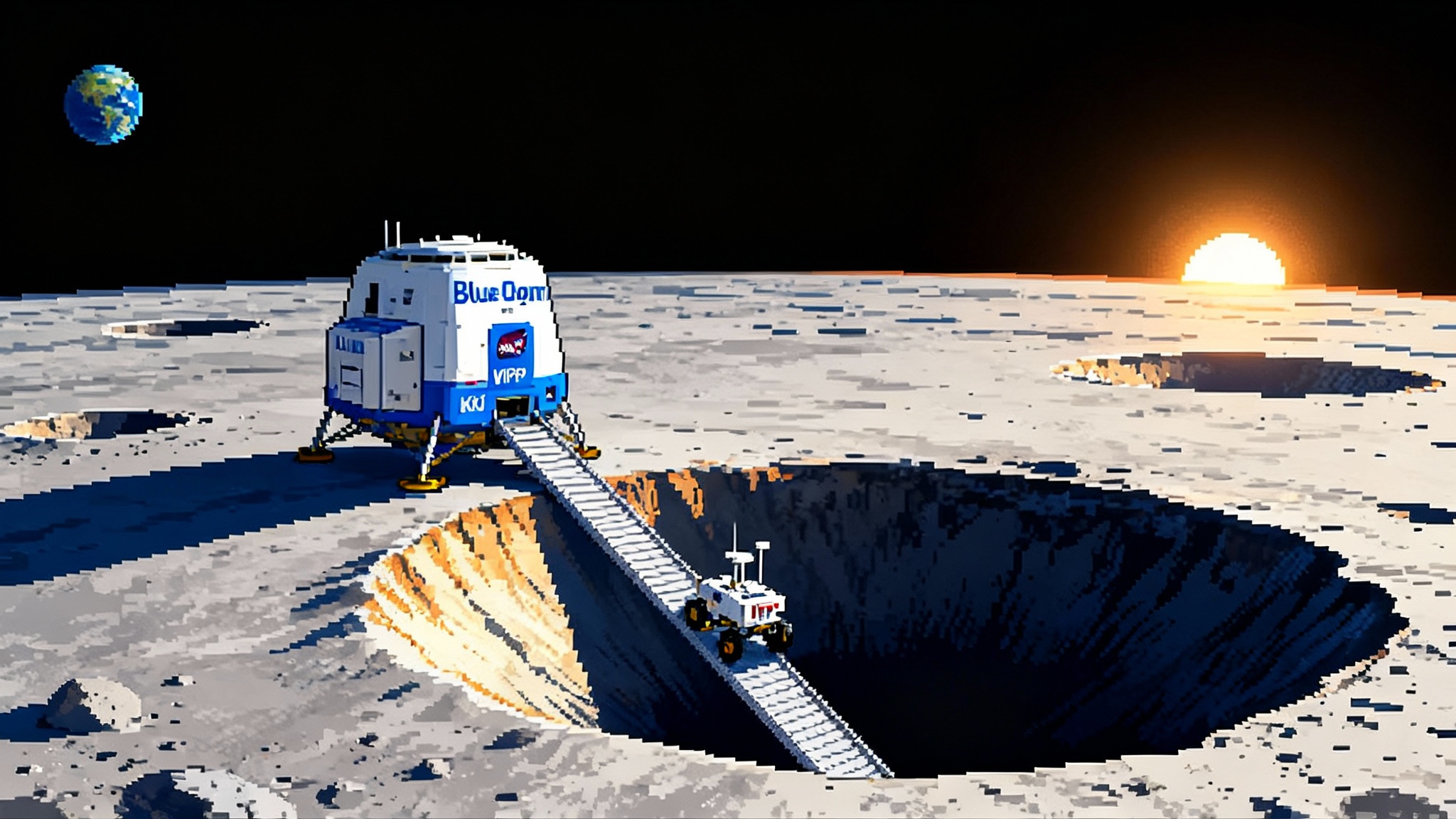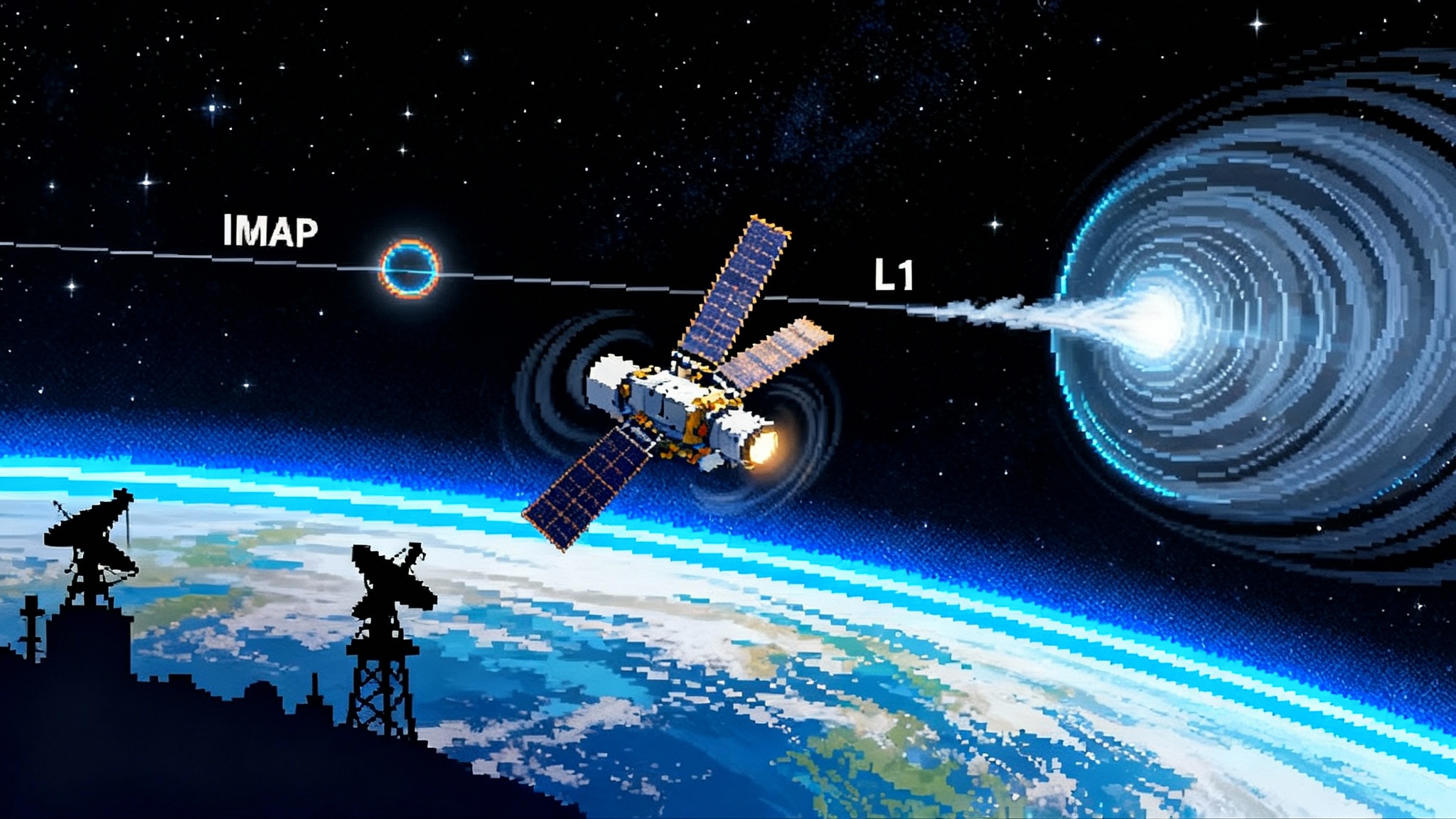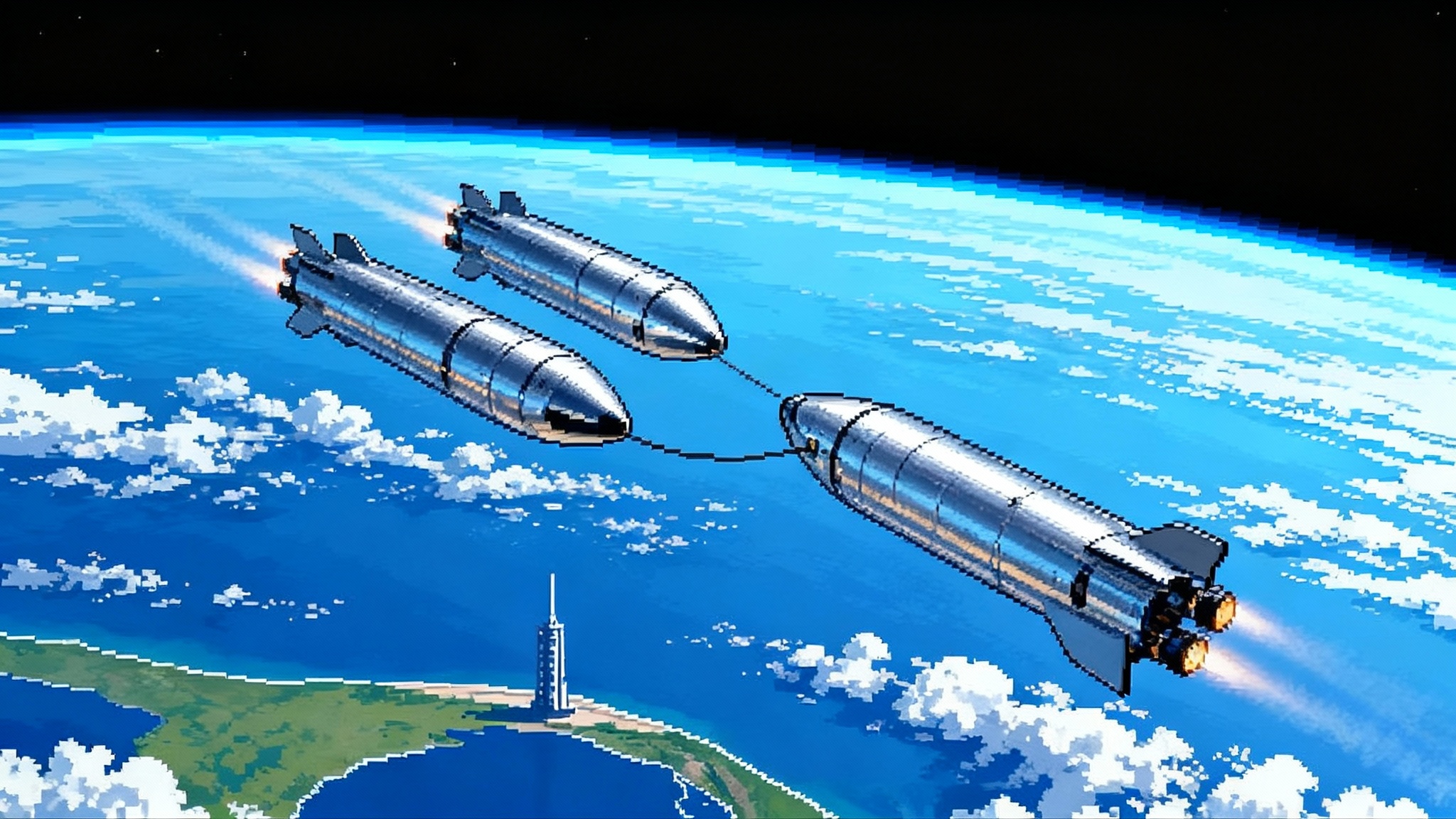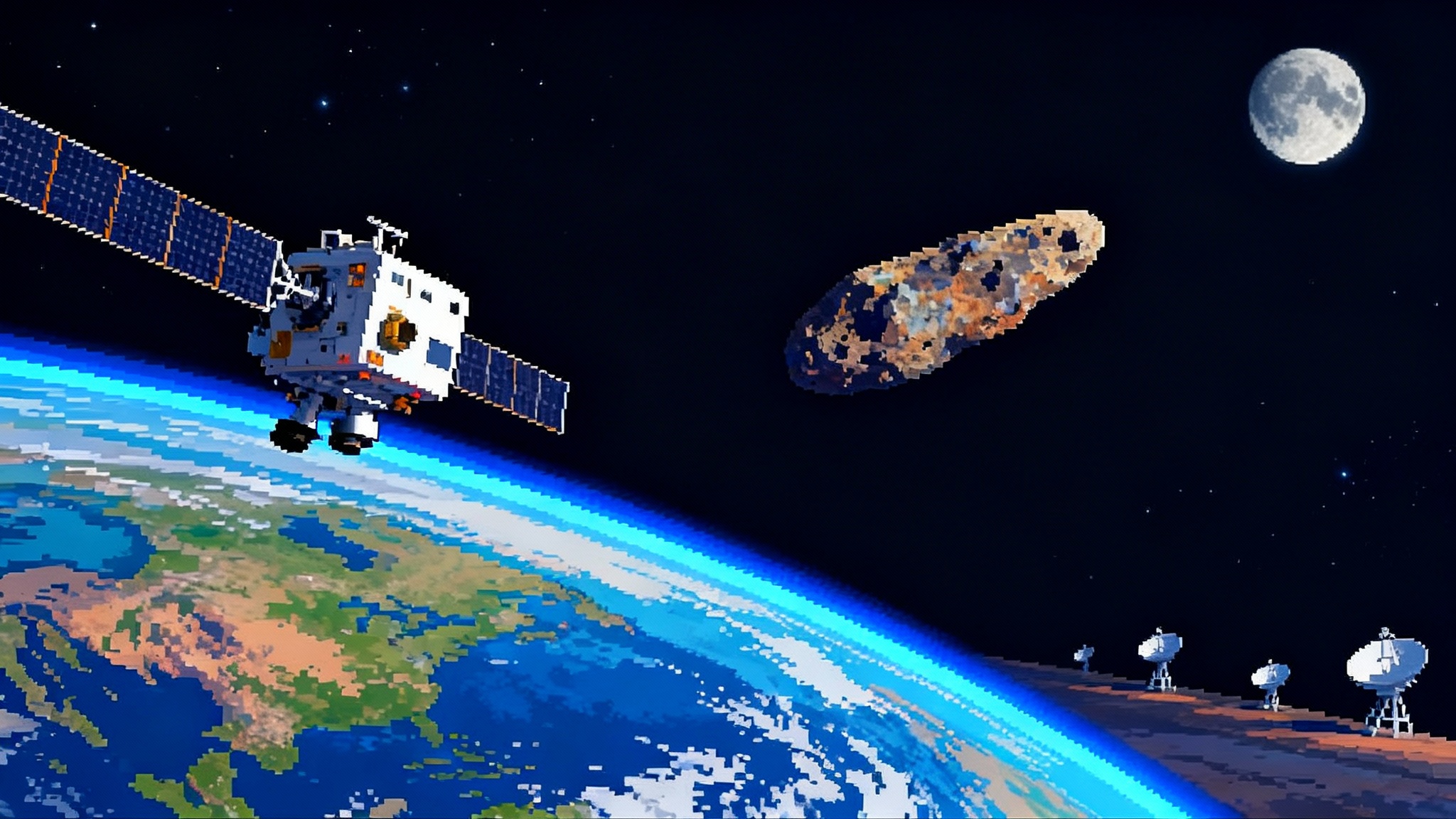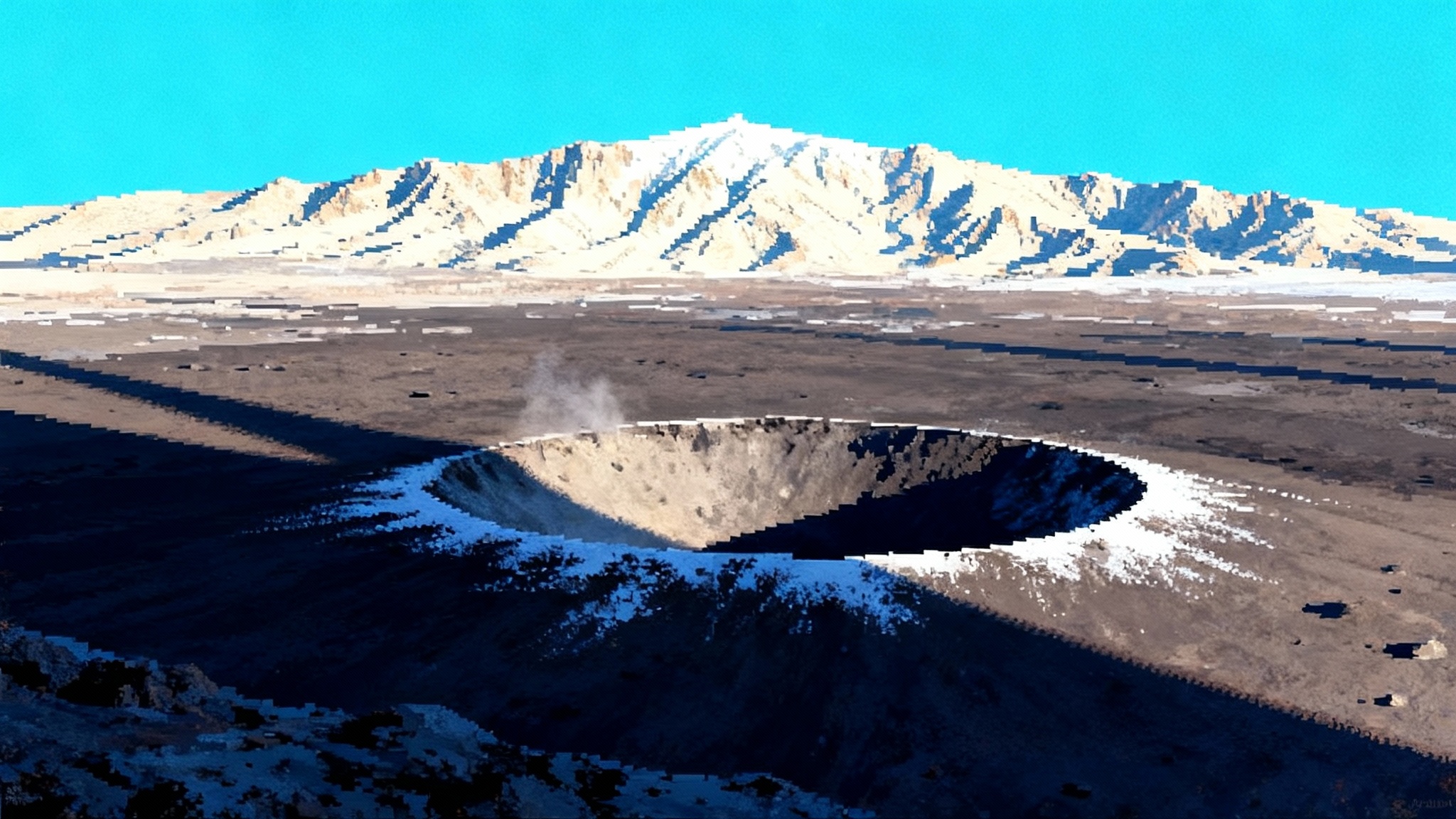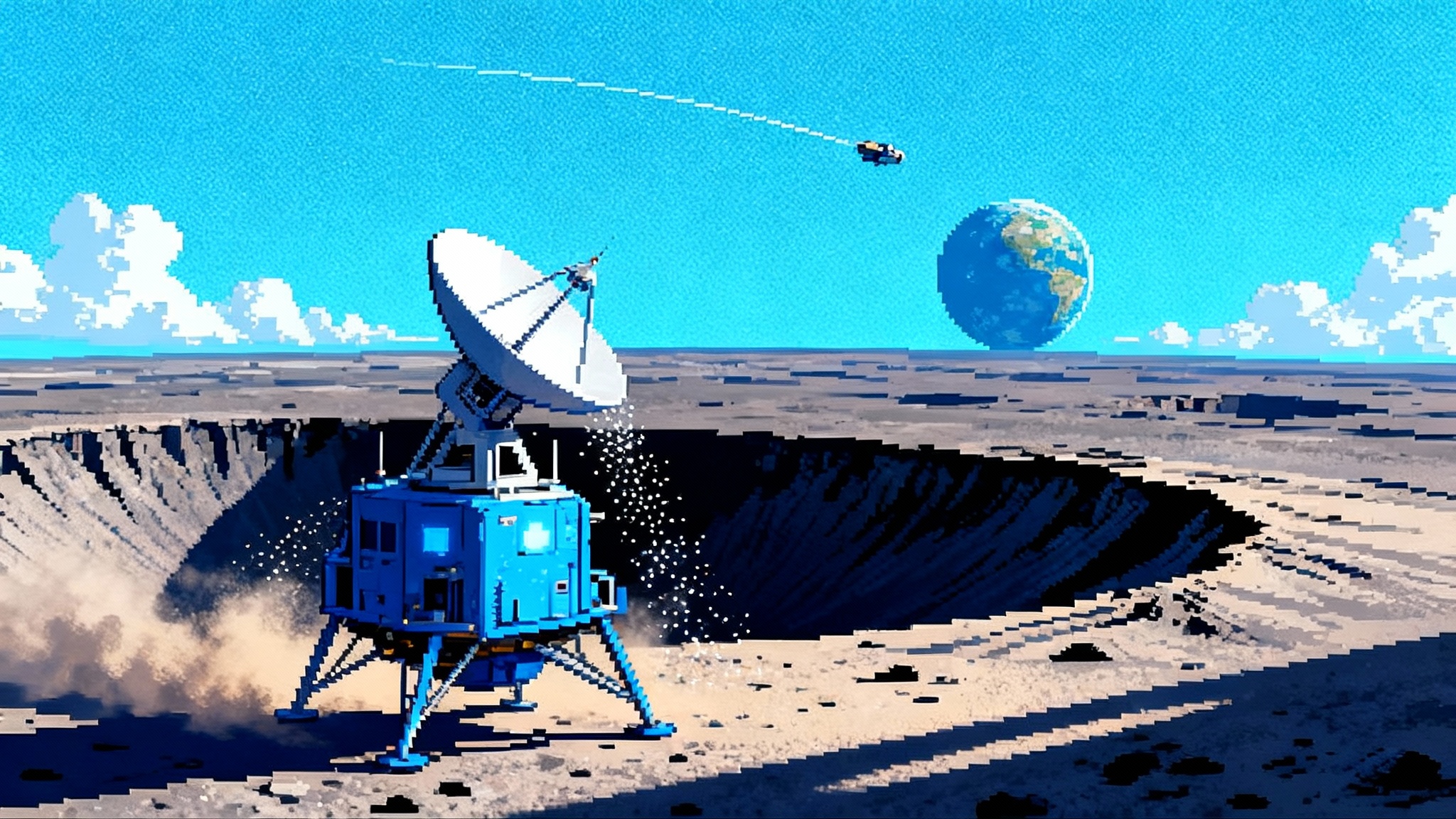Moon’s First Cell Network: Nokia IM-2 and the Lunar Internet
Nokia’s IM-2 payload briefly brought 4G LTE to the lunar surface, validating a shoebox base station that powered on and sent telemetry before the lander lost sunlight. Here is what worked, what failed, and a practical 2026 to 2029 roadmap for building a usable lunar internet.
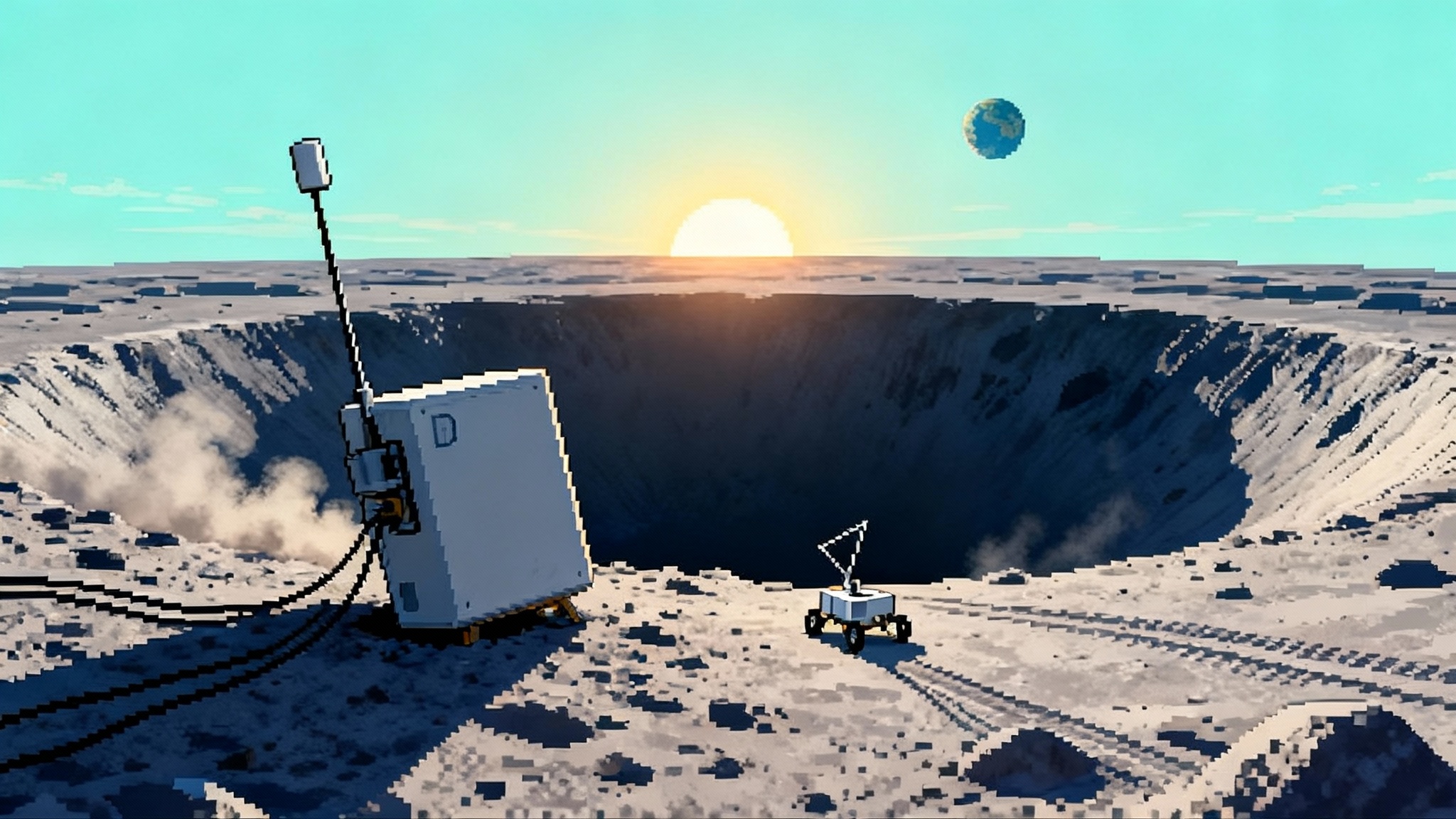
Breaking: the Moon just got cell service
On March 6, 2025, Intuitive Machines’ Athena lander touched down near the lunar south pole. Hours later, in a brief window of electrical power, Nokia Bell Labs turned on a shoebox-sized base station mounted to the lander and confirmed that a cellular network on the Moon could reach an on-air state and send operational data to Earth. Nokia later described the 25-minute session, noting that the system powered up, reported health, and showed all subcomponents functioning. It was not a phone call from the Moon, but it was the first lunar cellular network breathing on its own and talking. See the official details in the Nokia mission update.
This is not a press release curiosity. It is the moment a network layer arrived on the Moon, which is the missing piece for sustained operations. Bigger landers bring more gear, but an always available local network multiplies every rover, drill, and camera. The fastest lever for the lunar economy is not more mass in one shot. It is reliable links between many smaller machines.
What worked on IM-2 LTE
- The base station powered up. Nokia’s "network in a box" with radio and core software booted cleanly, entered an on-air state, and exchanged commands and telemetry during the power window.
- Management links held. Operations software on the lander talked to the ground station and Nokia’s control center, demonstrating remote configuration and health reporting.
- Off-the-shelf hardened. The build used commercial cellular components adapted for vacuum, radiation, dust, and thermal swings. This matters because Earth supply chains and cost curves can be repurposed for the Moon.
Think of it like switching on a small cell site in a remote valley, proving you can light up the spectrum and see the heartbeat from back in town. It does not serve customers yet, but you know the tower works.
What did not work, and why that matters
- Limited uptime. Athena came to rest with constrained sunlight, cutting the lander’s ability to recharge. That shortened the mission and left the cell node with only minutes of power.
- No rover link. The device module riding on Intuitive Machines’ Micro Nova hopper appeared ready after landing, then fell below its operating temperature by the time the base station was powered. A connection was never established. The Lunar Outpost rover slated to exercise the link never got its chance. The lesson is blunt. A network can be healthy in isolation and still fail the mission if the other endpoints are cold, dark, or busy.
Picture a pop-up Wi‑Fi router that boots fine while the laptop it needs to talk to is locked in a car trunk. Capability does not equal service unless timing, power, and thermal margins are engineered as a system.
The real bottleneck on the Moon is networking
For the next decade, the Moon will be a place where many small vehicles do short, risky jobs: scouting ice, sampling regolith, hauling loads, inspecting landing pads, and placing instruments. None of these robots wants to carry a heavy dish and a bespoke radio to phone home. None of them should. When a lander brings a local network, every robot within reach can shrink its own communications package and use the shared link. Coverage becomes a resource like power or water.
Terrestrial analogs are obvious. Construction sites run on portable cell nodes and mesh radios. Mines rely on private LTE. Undersea observatories use relays and store-and-forward links. The Moon will be a mix of all three.
A practical 2026 to 2029 roadmap
The IM-2 demo did not unlock lunar broadband, but it showed enough to write an actionable plan. This is the near-term buildout that turns one working cell node into a usable Moon network.
1) Ruggedize LTE today, add 5G features only where they help
- Harden for heat and cold. Design for survival in shadowed polar terrain with aggressive insulation, heaters that prioritize radios and clocks, and the ability to wake autonomously when sunlight returns. Target hot and cold start sequences that complete in under 60 seconds.
- Right-size the radios. Favor low-band carriers for reach and in-crater coverage. Use small sector antennas on short masts to clear rocks and lander bodies. For rover-to-rover backhaul, add a compact directional link, not a larger lander dish.
- Treat power like a budget, not a battery. Duty cycle radios, schedule wake windows with clients, and let the core sleep between sessions. Time-critical alarms can use a lightweight control channel while the full data plane remains idle.
- Keep the core simple. On the surface, non-public LTE is the default. Deploy a minimal, single-vendor stack for the first wave and test interoperability deliberately rather than assuming it. The point is reliability and reproducibility, not feature parity with Earth.
When and where 5G helps, pilot it with intent. Release 17 and 18 features like positioning assistance, time-sensitive networking for precise control, and network slicing for priority traffic can be grafted onto a stable LTE base. Do not chase the marketing label. Chase fewer dropped packets and easier integration.
2) Make delay-tolerant networking the rule, not the exception
The Moon has long gaps, moving shadows, and line-of-sight problems. Design the network as if outages are normal. Delay-tolerant networking is purpose-built for that reality. DTN stores data at each node until a path opens, like an email sitting in your outbox while the plane taxis. NASA’s LunaNet framework publishes the standards for how lunar networks should do this, including how to move data, distribute navigation and timing, and share status across providers. The current LunaNet Interoperability Specification is the reference every team should adopt and test against. See the NASA LunaNet spec.
What to implement between now and 2027:
- Put a DTN bundle agent on every surface node and rover, with the same addressing plan and priority classes.
- Define store timeouts, custody transfer rules, and retry policies for science data versus telemetry. Protect critical commands with higher priority and end-to-end checks.
- Prove cross-vendor DTN interoperability in chambers and field tests on Earth. Make it boring before it flies.
3) Add lunar relay satellites for backhaul and far side reach
Surface nodes need persistent pipes off world. That means orbiters. The first to arrive is ESA’s Lunar Pathfinder, planned to start services in 2026 as a commercial relay, and it will also test navigation using weak signals from Earth’s satellite navigation systems. ESA’s Moonlight program targets initial services by the end of 2028 and full operations by 2030, with navigation satellites prioritizing the south pole. Private operators are moving too, including Lockheed Martin’s Crescent Space, which proposes a Parsec cislunar network to add communications and positioning.
What to do on the ground to be ready:
- Standardize a compact surface user terminal that can talk S band for command and Ka band for data, with software-defined radios to pivot as operators and frequencies evolve.
- Budget mass and volume for a gimbal and star tracker so surface terminals can point reliably at fast-moving relay satellites.
- Write service level agreements in engineering terms. How many minutes of contact per hour, what minimum forward and return rates, and how much jitter science teams can tolerate.
4) Build PNT into the network from day one
Positioning, navigation, and timing are not nice to have. They are the skeleton of safe mobility and coordinated work. The next step is layered PNT: combine lunar satellites such as Moonlight’s planned navigation nodes, Lunar Pathfinder’s GNSS experiments, laser retroreflectors for precise ranging, and network-based methods.
Practical steps:
- Drop laser retroreflector arrays on masts near network nodes to create surveyed local reference points. This lets teams check the absolute position of rovers and landers with centimeter-level accuracy when needed.
- Use cellular positioning features and local time distribution to keep robots synchronized when satellites are not in view. A stable oscillator in each node, disciplined when a relay pass occurs, will prevent clock drift from ruining maps.
- Require every rover to support two PNT sources, one celestial or satellite-based and one network-based. Redundancy is not a luxury when a crater rim blocks your sky.
5) Use the network to unlock multi-robot ISRU
In situ resource utilization is how the Moon turns from an expedition into an economy. A realistic 2028 scene looks like this.
- Three robots share the work. A prospector rover maps volatiles at the sunline, a digger nibbles regolith at a trench, and a hauler ferries loads to a small processor that bakes out oxygen bound in the soil.
- A private LTE cell on a mast gives all three a common channel. The cell sleeps between jobs, wakes on a control beacon, and assigns priority lanes, so the hauler gets teleoperation packets first when humans take control from orbit or Earth.
- A DTN node buffers science data until a relay pass opens, then flushes it. If the relay is busy, the prospector hands its queue to the hauler when they rendezvous, and the hauler carries both loads to a high ridge with better sky.
- PNT is layered. The team does relative positioning from the cell and mast beacons for close formation work. When a relay is up, the network corrects clocks and updates the absolute map.
No single robot needs an Earth-class radio. The network makes a team out of parts.
What agencies and companies should do next
- Freeze a baseline stack. Pick a minimal LTE profile, a DTN bundle implementation, and a LunaNet-compliant service description. Publish test vectors and insist that vendors demonstrate cross-compatibility before flight.
- Fix thermal from the start. Budget heaters and insulation for radios and clocks, not just batteries and sensors. For south pole work, plan for long night survival or graceful hibernation with scheduled wake windows.
- Align power-up schedules. The IM-2 experience shows how easy it is for a healthy base station to miss its clients. Give the network node a say in mission timelines, so it comes up when rovers are warm and ready.
- Design a standard surface terminal. One box, two bands, steerable, LunaNet aware, with a published interface that any lander or rover can bolt on. The first companies to sell this like a catalog item will define the market.
- Incentivize relay use. Space agencies can accelerate adoption by offering subsidized relay passes to missions that adopt the standard stack and share basic status and health data back into the network.
Stakes for Artemis, commercial rovers, and telepresence
Artemis III is currently planned for the late 2020s, with a first south pole excursion requiring robust surface coverage. The earliest wins arrive before boots touch regolith. In the next two to three years, a networked polar zone would let teleoperators on Earth or in lunar orbit supervise short, high-risk sorties with low latency during relay passes and forgiving DTN buffering the rest of the time. Science teams could seed many small sensors and cameras that all backhaul through a few standard terminals. Commercial rovers could sell time on their radios when idle and buy coverage when they roll into a shadowed crater. For mission context, see our pieces on VIPER south pole delivery and the Starship refueling milestone.
Most importantly, a shared network lowers the threshold for participation. A university payload or a startup robot can skip building a deep-space radio if a lander brings a cell and a LunaNet-aware terminal. That is how you get more shots on goal and more data per dollar.
The upshot
We like to imagine lunar progress as a sequence of larger vehicles and longer missions. History says otherwise. Cities come from roads and utilities, not bigger trucks. The IM-2 demo showed that a small, efficient, and standards-based cell node can wake up on another world and talk. It also showed that timing, power, and thermal margins bind the system together. If we spend the next four years putting rugged private LTE on the surface, turning DTN into table stakes, flying a few relay satellites, and baking PNT into the architecture, the Moon becomes a place where many hands can work at once.
Build the network first. Everything else gets easier after that.
References: official IM-2 details in the Nokia mission update and lunar networking standards in the NASA LunaNet spec.
